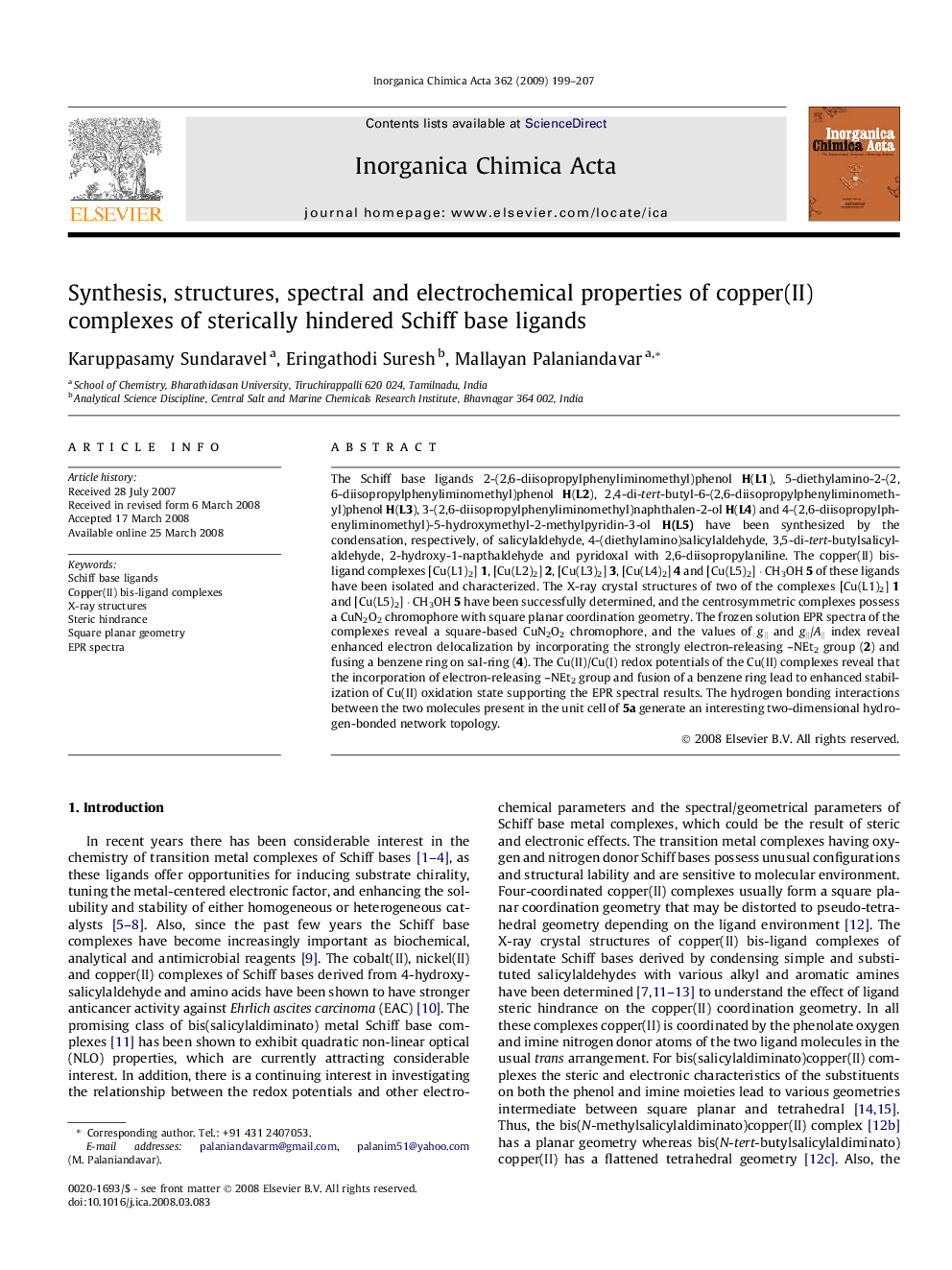| Article ID | Journal | Published Year | Pages | File Type |
|---|---|---|---|---|
| 1310012 | Inorganica Chimica Acta | 2009 | 9 Pages |
The Schiff base ligands 2-(2,6-diisopropylphenyliminomethyl)phenol H(L1), 5-diethylamino-2-(2,6-diisopropylphenyliminomethyl)phenol H(L2), 2,4-di-tert-butyl-6-(2,6-diisopropylphenyliminomethyl)phenol H(L3), 3-(2,6-diisopropylphenyliminomethyl)naphthalen-2-ol H(L4) and 4-(2,6-diisopropylphenyliminomethyl)-5-hydroxymethyl-2-methylpyridin-3-ol H(L5) have been synthesized by the condensation, respectively, of salicylaldehyde, 4-(diethylamino)salicylaldehyde, 3,5-di-tert-butylsalicylaldehyde, 2-hydroxy-1-napthaldehyde and pyridoxal with 2,6-diisopropylaniline. The copper(II) bis-ligand complexes [Cu(L1)2] 1, [Cu(L2)2] 2, [Cu(L3)2] 3, [Cu(L4)2] 4 and [Cu(L5)2] · CH3OH 5 of these ligands have been isolated and characterized. The X-ray crystal structures of two of the complexes [Cu(L1)2] 1 and [Cu(L5)2] · CH3OH 5 have been successfully determined, and the centrosymmetric complexes possess a CuN2O2 chromophore with square planar coordination geometry. The frozen solution EPR spectra of the complexes reveal a square-based CuN2O2 chromophore, and the values of g‖ and g‖/A‖ index reveal enhanced electron delocalization by incorporating the strongly electron-releasing –NEt2 group (2) and fusing a benzene ring on sal-ring (4). The Cu(II)/Cu(I) redox potentials of the Cu(II) complexes reveal that the incorporation of electron-releasing –NEt2 group and fusion of a benzene ring lead to enhanced stabilization of Cu(II) oxidation state supporting the EPR spectral results. The hydrogen bonding interactions between the two molecules present in the unit cell of 5a generate an interesting two-dimensional hydrogen-bonded network topology.
Graphical abstractThe Cu(II) bis-ligand complexes of bidentate Schiff base ligands derived from hydroxyaromatic aldehydes possess distorted square planar coordination geometries around Cu(II), as assessed from the higher g∥/A∥g∥/A∥ values (129–148 cm) and more negative Cu(II)/Cu(I) redox potentials. However, the incorporation of strongly electron-releasing –NEt2 group on sal-ring leads to a perfect square planar CuN2O2 coordination geometry (g∥/A∥g∥/A∥, 118 cm) and more negative Cu(II)/Cu(I) redox potential on account of enhanced electron delocalization.Figure optionsDownload full-size imageDownload as PowerPoint slide
